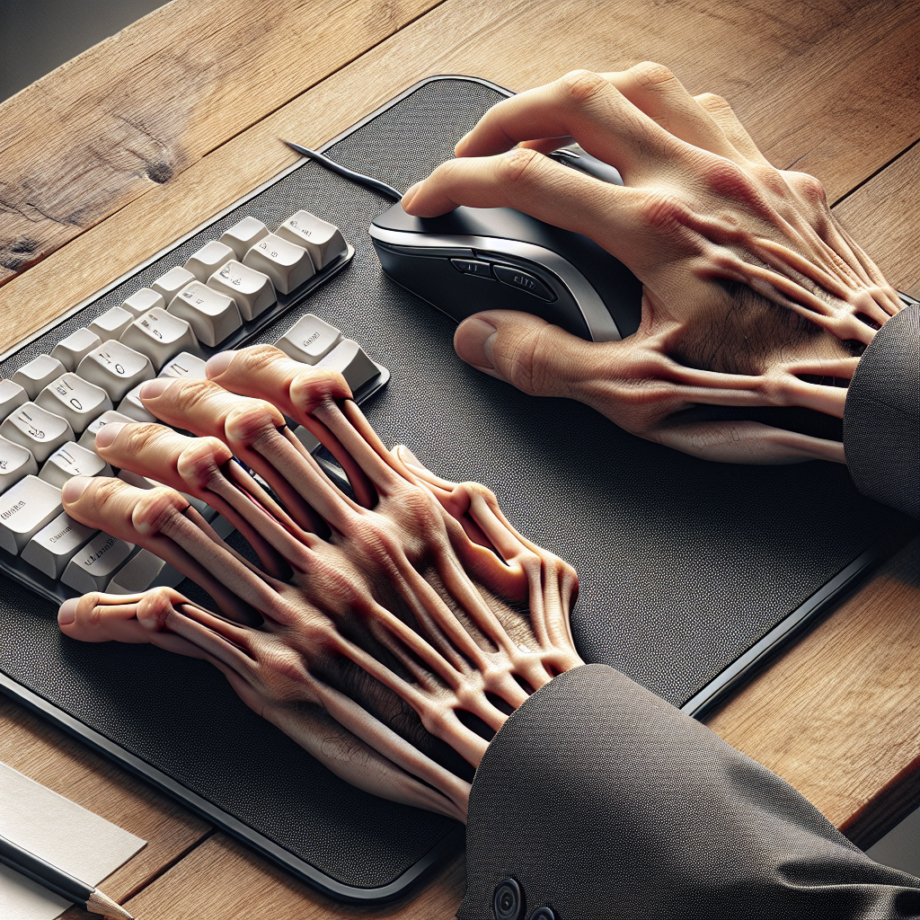
The use of ergonomic accessories has surged in popularity as more individuals realize the effects of poor posture and improper body mechanics on overall health. One significant aspect is the impact of ergonomic mouse pads on hand positioning while typing. Many users question whether these pads offer tangible benefits that affect their comfort and productivity during long hours of work. In this article, we will dive deep into the relationship between ergonomic mouse pads and their effects on hand positioning, along with exploring the benefits they provide.
| Feature | Standard Mouse Pad | Ergonomic Mouse Pad |
|---|---|---|
| Wrist Support | None | Integrated support for proper wrist positioning |
| Material | Basic cloth or plastic | Memory foam or gel for comfort |
| Height | Flat | Elevated for optimal hand positioning |
| Design | Simple | Curved or contoured to support the wrist |
| Adjustability | None | Some models allow for height adjustments |
Understanding Ergonomics
Before we delve into how ergonomic mouse pads affect hand positioning, it’s essential to understand what ergonomics is. Ergonomics involves designing workspaces and tools that fit the worker, rather than forcing workers to adapt to tools that may cause discomfort or injury. Proper ergonomics seeks to optimize efficiency while preventing injuries associated with repetitive strain.
Importance of Hand Positioning
Hand positioning plays a vital role in preventing injuries such as carpal tunnel syndrome, tendonitis, and other musculoskeletal disorders. Proper hand alignment while typing allows for smoother movements and reduces strain on muscles and tendons. An ergonomic mouse pad aims to improve this positioning by providing adequate support and maintaining a neutral wrist posture.
Common Hand Positioning Issues
- Wrist Extension: Raising the wrist too high can lead to pressure on the median nerve.
- Wrist Flexion: Bending the wrist excessively can strain your tendons.
- Forearm Elevation: Incorrect forearm positioning can impact shoulder posture.
Benefits of Ergonomic Mouse Pads
Investing in ergonomic mouse pads can significantly enhance your workspace setup. Here are some of the primary benefits:
1. Improved Comfort
Ergonomic mouse pads often feature materials like memory foam or gel that conform to the wrist’s natural curve. This design helps to reduce pressure points and provides a cushioned surface, leading to a more comfortable typing experience.
2. Enhanced Support
Many ergonomic mouse pads come with built-in wrist support, which can help maintain the wrist in a neutral position. This support minimizes wrist extension and flexion, reducing the risk of injury.
3. Better Posture
Using an ergonomic mouse pad can encourage users to maintain better overall posture. With properly aligned hands, shoulders, and neck are less likely to strain during prolonged computer use.
4. Increased Productivity
Comfortable workspaces allow for longer focus periods, which can lead to enhanced productivity. Users are less likely to take breaks due to discomfort, leading to a more productive workday.
5. Prevention of Injuries
Perhaps most critically, ergonomic mouse pads help prevent repetitive strain injuries. By maintaining a neutral wrist position, users can reduce the likelihood of developing conditions like carpal tunnel syndrome.
Choosing the Right Ergonomic Mouse Pad
1. Material
The material should provide enough comfort without sacrificing stability. Look for memory foam, gel, or a combination of both.
2. Height and Shape
Choose a mouse pad that provides adequate height to keep your wrist aligned with your hand while typing. Pads with a contoured shape offer additional support.
3. Stability
A non-slip base is crucial to ensure that the mouse pad stays in position during use.
4. Dimensions
Consider the size of your workspace. Ensure that the mouse pad fits comfortably on your desk while leaving enough space for other important tools.
5. Cleanability
Choose a mouse pad that is easy to clean, as it’s essential for maintaining hygiene, especially in shared workspaces.
Implementing Ergonomic Practices
Along with using ergonomic mouse pads, adopting overall ergonomic practices will enhance the overall work experience. Here are some tips to consider:
1. Desk Height
Your desk should be at a height where your forearms are parallel to the ground when typing. Adjust your chair’s height accordingly.
2. Monitor Position
Keep your monitor at eye level to ensure your neck remains neutral when looking at the screen.
3. Chair Support
Use a chair that provides back support, allowing your spine to maintain its natural curve.
4. Breaks
Taking short breaks every 30 minutes can help alleviate tension and reduce fatigue.
5. Stretching
Incorporating stretching exercises into your routine can also help enhance flexibility and relieve muscle tension.
Conclusion
In summary, using an ergonomic mouse pad can significantly affect hand positioning while typing. It provides crucial support that enhances comfort, encourages proper posture, and minimizes the risk of injuries. While an ergonomic mouse pad is an excellent start to creating a more comfortable workspace, it’s essential to integrate it with other ergonomic practices for maximum benefit. Investing in your health and comfort in the long run can lead to improved productivity and overall well-being.
